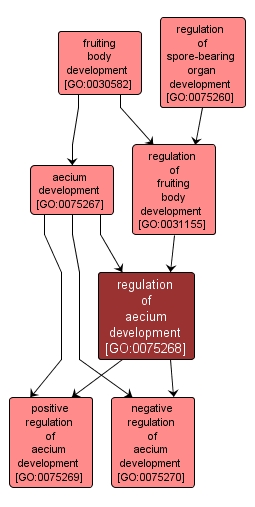GO TERM SUMMARY
|
| Name: |
regulation of aecium development |
| Acc: |
GO:0075268 |
| Aspect: |
Biological Process |
| Desc: |
Any process that modulates the frequency, rate or extent of aecium development, a process by which a cuplike structure containing chains of aeciospores is formed. |
|

|
INTERACTIVE GO GRAPH
|














